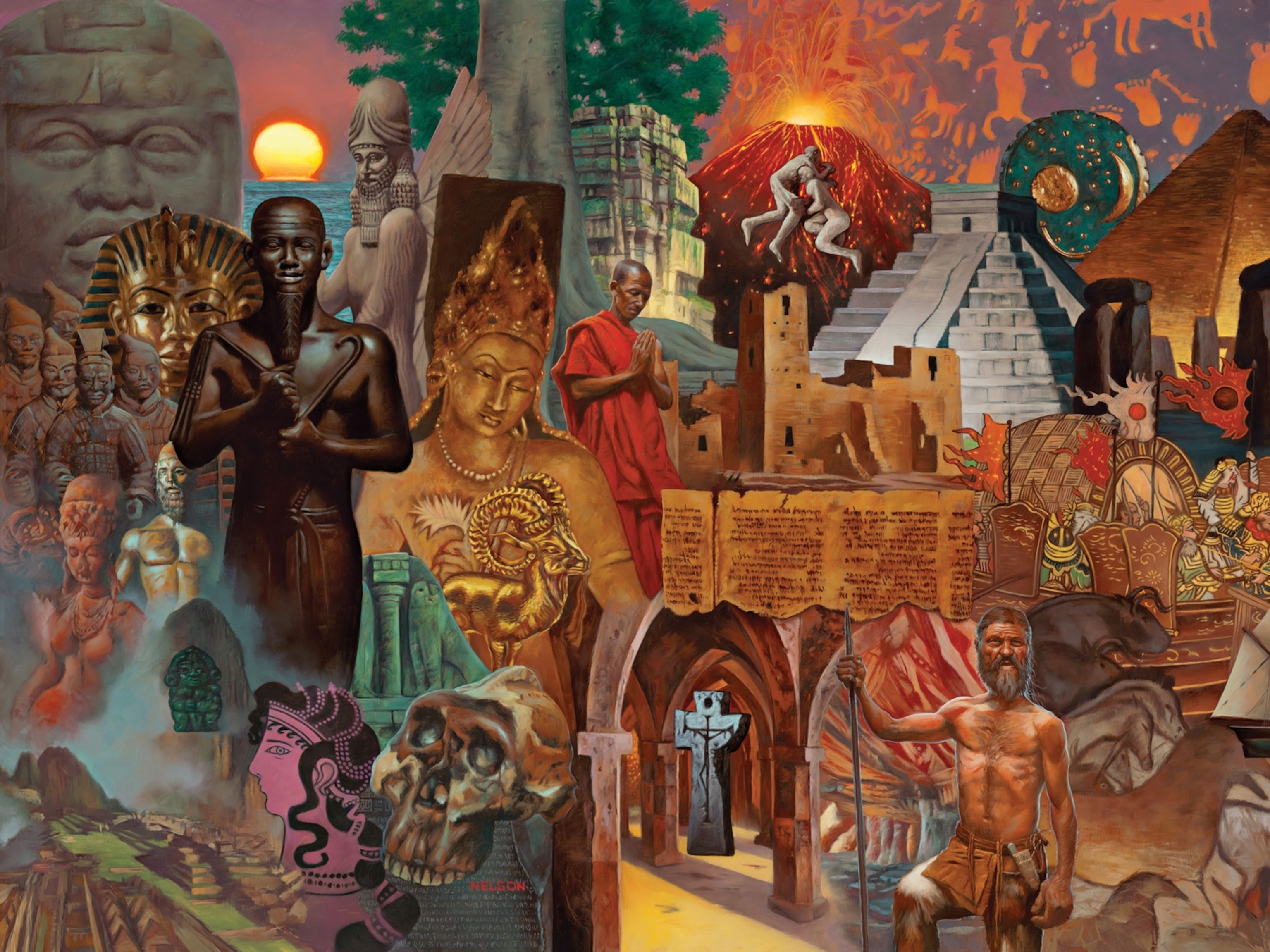What did past civilizations leave behind? For archaeologists, that question can be difficult to answer. Remnants of buildings and other sites can be almost impossible to spot. Blame the ravages of time and nature, which can cover old walls and foundations in trees, vegetation, water, soil, and more.
Then turn to LiDAR, one of archaeology’s most exciting modern tools. Light detection and ranging, or LiDAR, has changed the face of archaeology by making it possible to measure and map objects and structures that might otherwise remain hidden.
Modern LiDAR relies on laser sensors that are deployed from the air or via handheld units. As lasers shine on the area to be mapped, they emit brief pulses of light. The amount of time it takes for those pulses to reflect back to the instrument is measured, and each measurement is plotted using GPS. Computers then use that data to construct a 3-D map of the area.
Adapting military tech
One of LiDAR’s strengths is how well it can pinpoint tiny surface anomalies that indicate small sites like graves or big ones like sunken cities. But LiDAR has its limitations: It can’t reach beneath the ground, and trees in densely wooded areas can sometimes cause features to be missed.
Still, its accuracy is prized by archaeologists, who use it to map topography, plan excavations, and spot archaeological sites they’d never be able to see with the naked eye. It is relatively quick and inexpensive compared to archaeological excavations, and can offer a high-level view not accessible to researchers who focus on just a few sites on the ground.
The technology was invented for military use, but was first applied widely by meteorologists intent on studying clouds. The first LiDAR prototype was built in 1961 by Hughes Aircraft Company, which had built the first laser a year earlier. One of the earliest beneficiaries of LiDAR was the United States’ space program; the technology was used to map the moon during the 1971 Apollo 15 mission. Today, LiDAR is more down to earth, and is used to find archaeological clues both on the surface and in the water.
“Archaeology revolution”
Remote sensing has been credited with an “archaeology revolution” that is shifting the way researchers think about their work. In the early 2010s, archaeologists looking for evidence of hard-to-find Maya sites were astonished when LiDAR revealed a lost Maya city.
In another case, researchers used LiDAR to spot more than 20,000 archaeological features of a seemingly minor site in Mexico that actually had been home to an ancient city. “In 45 minutes of flying, the LiDAR team accomplished a decade’s worth of archaeological survey,” said anthropologist Christopher Fisher in a release. Bathymetric LiDAR even revealed a Roman villa in Croatia.
LiDAR doesn’t just reveal what is hidden: It can also document what has already been found. The technology is being used on the ground to map structures like the Notre Dame cathedral in Paris and Florence, Italy’s Salone dei Cinquecento.
Related Topics
You May Also Like
Go Further
Animals
- How can we protect grizzlies from their biggest threat—trains?How can we protect grizzlies from their biggest threat—trains?
- This ‘saber-toothed’ salmon wasn’t quite what we thoughtThis ‘saber-toothed’ salmon wasn’t quite what we thought
- Why this rhino-zebra friendship makes perfect senseWhy this rhino-zebra friendship makes perfect sense
- When did bioluminescence evolve? It’s older than we thought.When did bioluminescence evolve? It’s older than we thought.
- Soy, skim … spider. Are any of these technically milk?Soy, skim … spider. Are any of these technically milk?
Environment
- Are the Great Lakes the key to solving America’s emissions conundrum?Are the Great Lakes the key to solving America’s emissions conundrum?
- The world’s historic sites face climate change. Can Petra lead the way?The world’s historic sites face climate change. Can Petra lead the way?
- This pristine piece of the Amazon shows nature’s resilienceThis pristine piece of the Amazon shows nature’s resilience
- Listen to 30 years of climate change transformed into haunting musicListen to 30 years of climate change transformed into haunting music
History & Culture
- Meet the original members of the tortured poets departmentMeet the original members of the tortured poets department
- Séances at the White House? Why these first ladies turned to the occultSéances at the White House? Why these first ladies turned to the occult
- Gambling is everywhere now. When is that a problem?Gambling is everywhere now. When is that a problem?
- Beauty is pain—at least it was in 17th-century SpainBeauty is pain—at least it was in 17th-century Spain
Science
- Here's how astronomers found one of the rarest phenomenons in spaceHere's how astronomers found one of the rarest phenomenons in space
- Not an extrovert or introvert? There’s a word for that.Not an extrovert or introvert? There’s a word for that.
- NASA has a plan to clean up space junk—but is going green enough?NASA has a plan to clean up space junk—but is going green enough?
- Soy, skim … spider. Are any of these technically milk?Soy, skim … spider. Are any of these technically milk?
Travel
- Could Mexico's Chepe Express be the ultimate slow rail adventure?Could Mexico's Chepe Express be the ultimate slow rail adventure?
- What it's like to hike the Camino del Mayab in MexicoWhat it's like to hike the Camino del Mayab in Mexico




